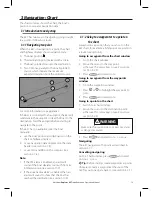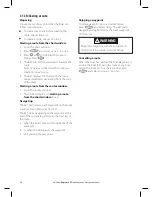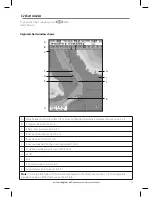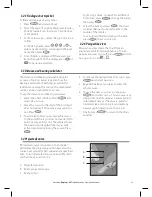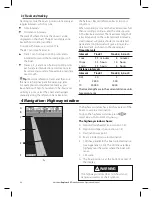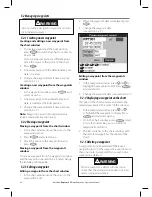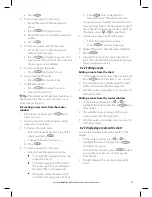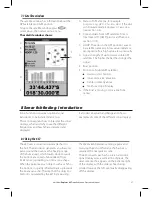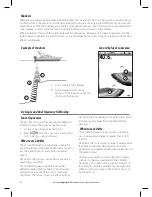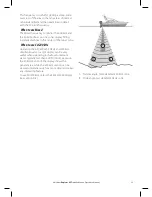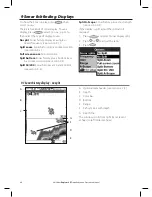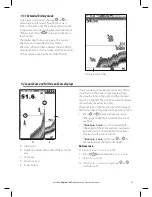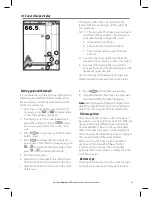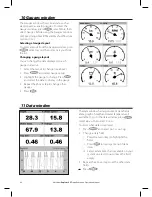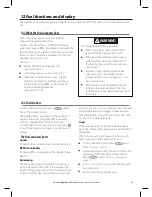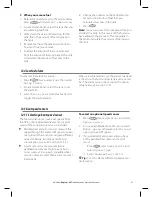
33
Northstar
Explorer 657
Installation and Operation Manual
Bottom types
Mud, weed and sandy bottoms tend to weaken
and scatter the sonar pulse, resulting in a weak
echo. Hard, rocky or coral bottoms reflect the
pulse, resulting in a strong echo.
A
C
D
B
A Single
fish
B Large school of fish
C Small school of fish
D Bottom
A Kelp / Weed
B Soft bottoms such as mud, weed and sand
show as narrow bands
C Hard bottoms such as rock or coral show as
wide bands
A
C
B
Frequency and cone width
Water
Cone width
Cone width
Depth
at 50 kHz
at 200 kHz
25
20
5
50
40
10
100
80
20
150
130
30
200
170
40
300
250
60
400
330
80
600
500
120
800
660
150
1000
830
190
45° cone
11°
cone
The sonar pulse
generated by the 657
transducer travels down
through the water,
spreading outwards in
a cone shape. The cone
width is dependent
upon the frequency of
the pulse; at 50 kHz it
is approximately 45°,
and at 200 kHz it is
approximately 11°.
The differences in the
cone width affect what is
displayed. See
section 8-3.

